I spent a significant chunk of my mid-20s at Ravisloe Country Club. Often hazy and worse for the wear, I’d wake up at the crack of dawn on Saturday or Sunday and make the 40-minute drive south from Chicago. My weekend routine was a morning round at Ravisloe followed by afternoon beers and games of bags with buddies.
Just a few years before, I hadn’t been playing much golf at all. But Ravisloe changed that; it was a wonderful golf course at an affordable price. I became an evangelist. Whenever friends wanted to play, we went to Ravisloe. Whenever out-of-towners asked me where to go for public golf in the Chicago area, I said Ravisloe.
But now, when I go back there, I cringe at the new trees, the smaller greens, and the tighter fairways. Despite its popularity, Ravisloe is being watered down—literally and figuratively.
◊
Ravisloe’s design pedigree could hardly be stronger. Willie Watson, Donald Ross, and the duo of William Langford and Theodore Moreau all worked on the course during the Golden Age of golf architecture. In 2001, David Esler carried out a restoration along the lines of Ross’s principles.
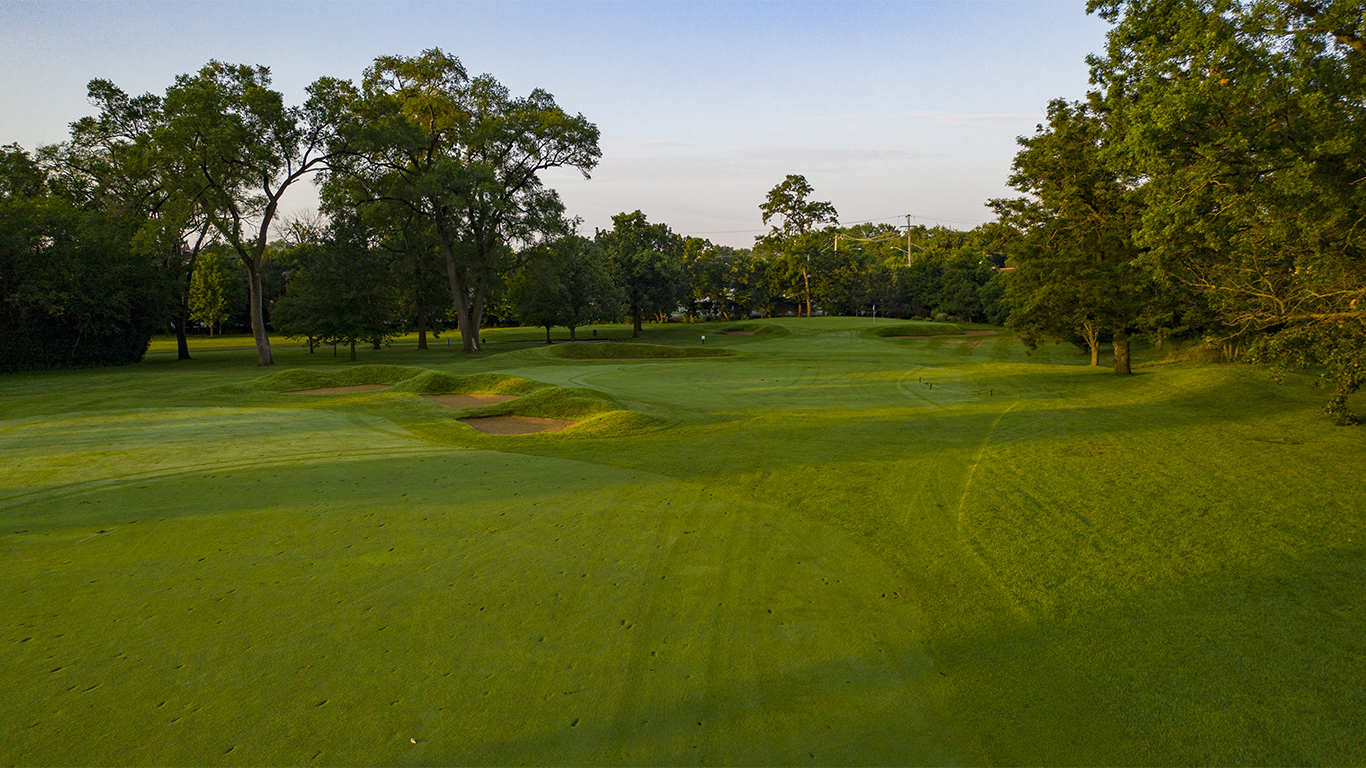
The short par-4 5th, with abandoned bunkers in the trees on the right side. Photo credit: Andy Johnson
When the bottom fell out of the economy at the end of the decade, the private club shut down. Veterinarian Claude Gendreau saved the course by purchasing it in 2009, and he opened it up to the public for the first time in its history. At the time, he told the Chicago Tribune, “After 108 years as a private club, it’s about time that people can enjoy it. I don’t like this exclusive stuff. If there are nice things, I want to share them.”
Dr. Gendreau is not a golfer, but his heart was in the right place. His commitment to accessibility was a breath of fresh air. Unfortunately, in the years since, he has not shown the same commitment to preserving Ravisloe’s historic course design.
Since Gendreau took over in 2009, the course’s presentation has steadily declined. The greens have gotten smaller and softer, which minimizes the effect of their well-crafted internal contours. Already a heavily treed property, Ravisloe now has even more trees, many of them planted in thoughtless positions. Two of the best holes have been drastically altered: the 11th, one of Chicago’s finest long par 3s, has been shortened, diminishing the course’s variety; and the par-4 12th has been converted into a par 5, taking its centerline hazard out of play for virtually all players. Gendreau has spent substantial money on new tees, trees, and course signage—money that could have been allocated to expanding the greens to their former dimensions.
Even though Ravisloe has an architect willing to offer free consultation, the majority of the recent work has been done in-house. Dr. Gendreau insists on doing things his way, and of course that’s his right as the owner. But as a golfer and longtime supporter of Ravisloe, I’m going to tell him it stinks.
-
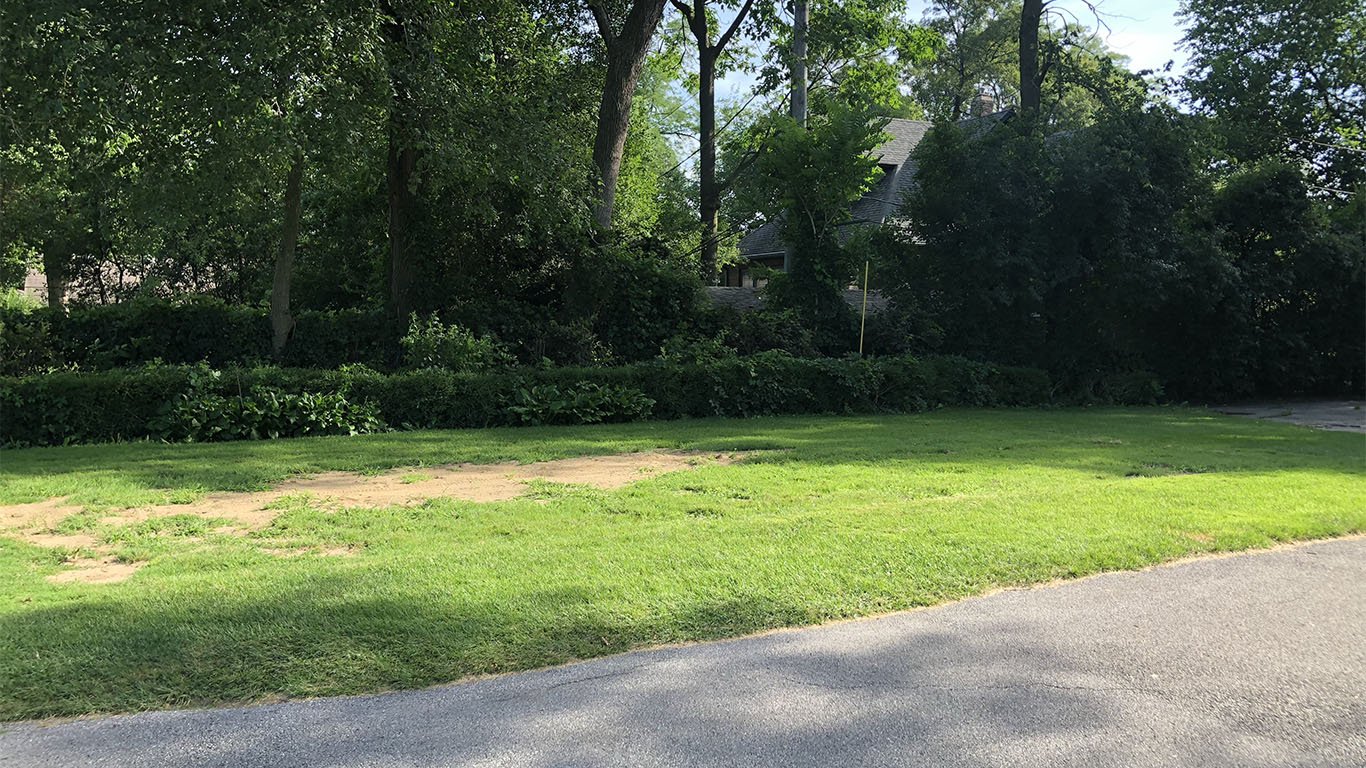
The abandoned back tee on the 11th hole at Ravisloe. Photo credit: Andy Johnson
-
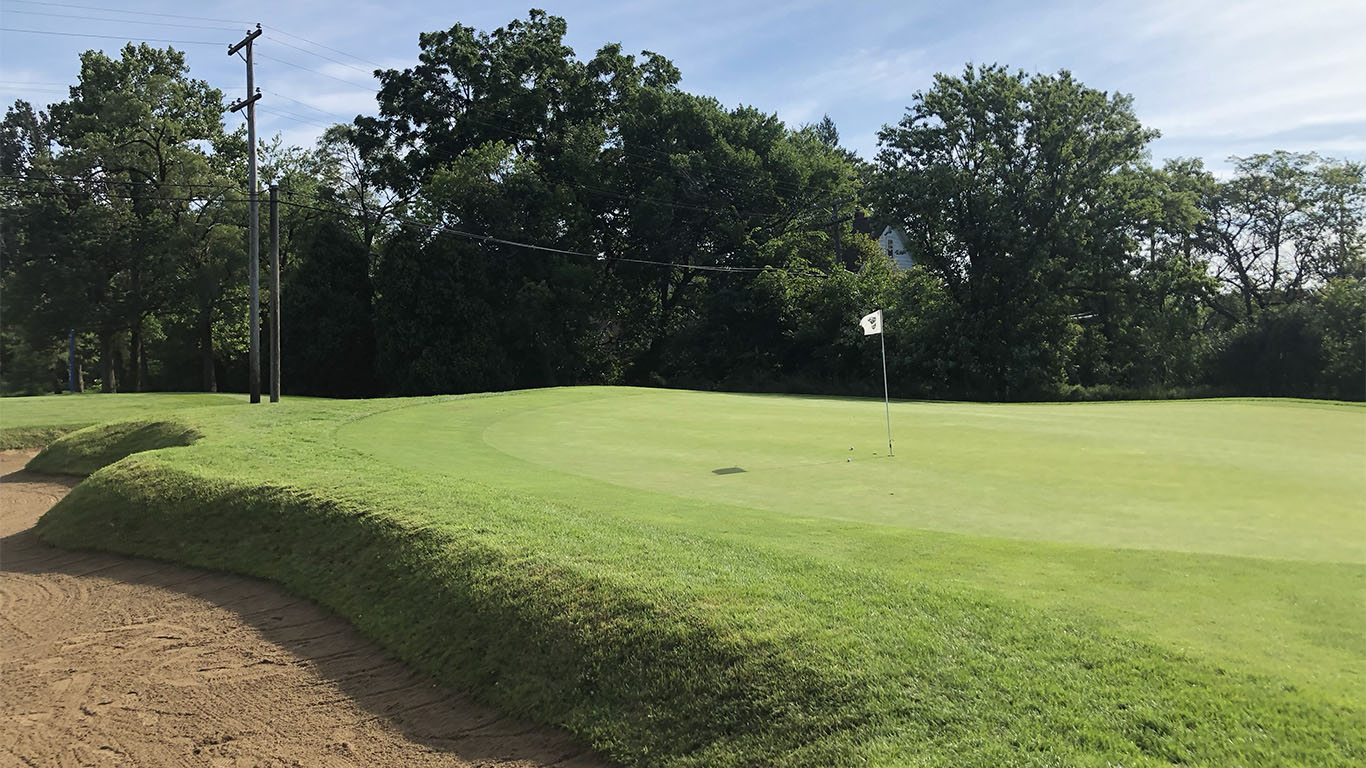
The missing green on the par-4 9th hole at Ravisloe. Photo credit: Andy Johnson
-
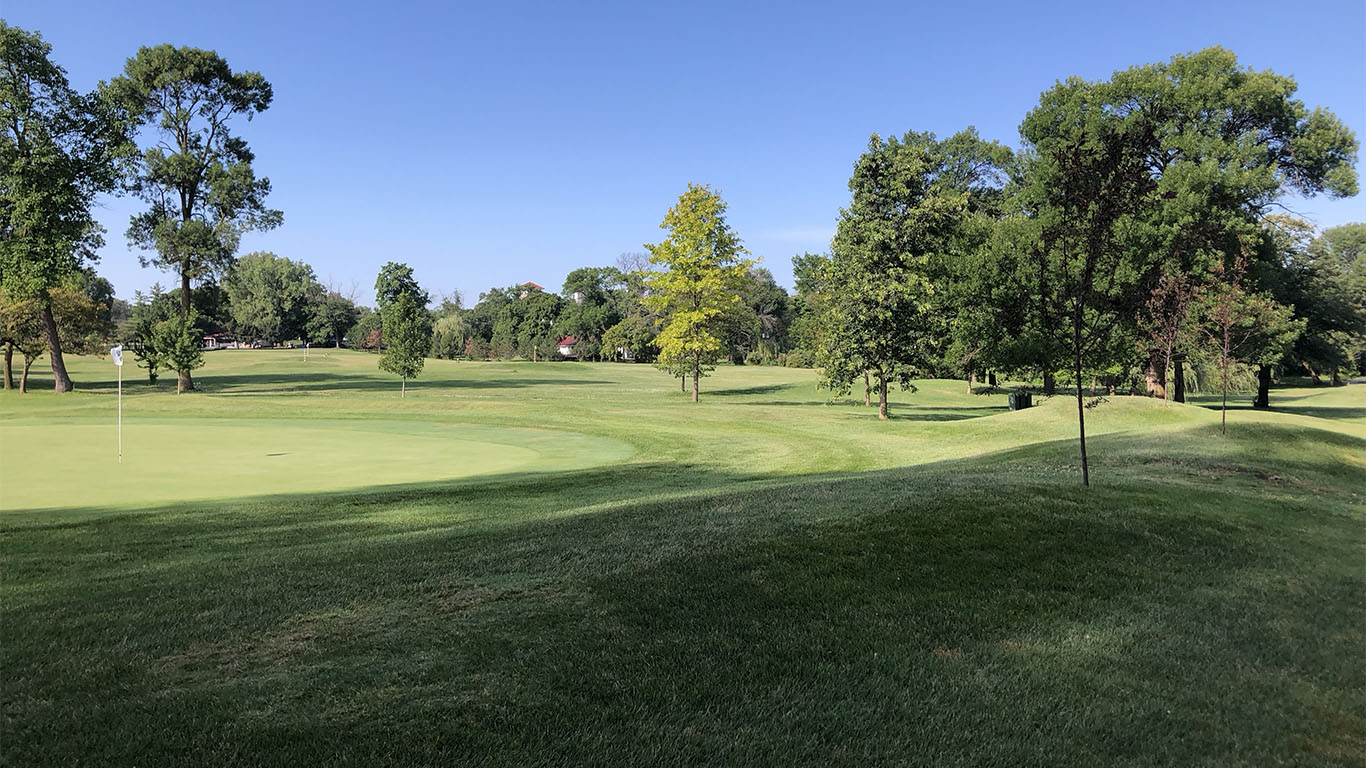
Behind the 10th green at Ravisloe, newly planted trees that will soon cause problems. Photo credit: Andy Johnson
-
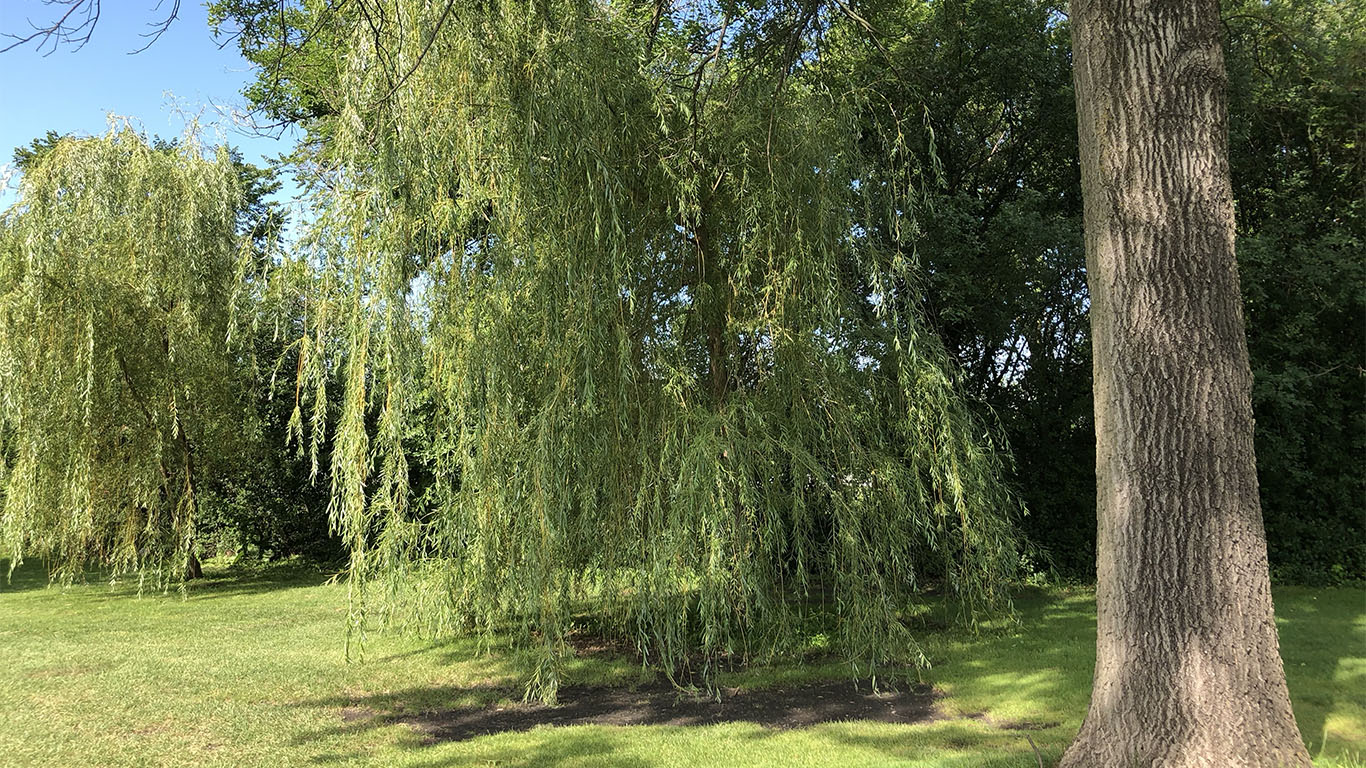
A young willow tree already causing turf damage on the 14th hole at Ravisloe. Photo credit: Andy Johnson
Gendreau is a noted conservationist, so I understand his affinity for trees and even his desire to introduce more to the property. But golf conservation is important as well, and I cringe at the type and location of the trees he has added. Many are non-indigenous maples and willows that have little relationship to the land. Some stand directly behind greens, where they may eventually destroy the putting surfaces they are “framing.”
The willows in particular are already taking hold and damaging the turf. To put it lightly, willows are aggressive trees. They overrun everything around them—not only grass but also sometimes irrigation and drainage lines. So even if the planting spree stops, the situation at Ravisloe will get worse.
◊
“As beautiful as trees are, and as fond as you and I are of them, we still must not lose sight of the fact that there is a limited place for them in golf. We must not allow our sentiments to crowd out the real intent of a golf course.” –Donald Ross
What makes all of this especially frustrating is that Ravisloe has many advantages that other courses don’t. For one, there’s a crisp, complete aerial photograph from 1938. It shows what Ravisloe could be.
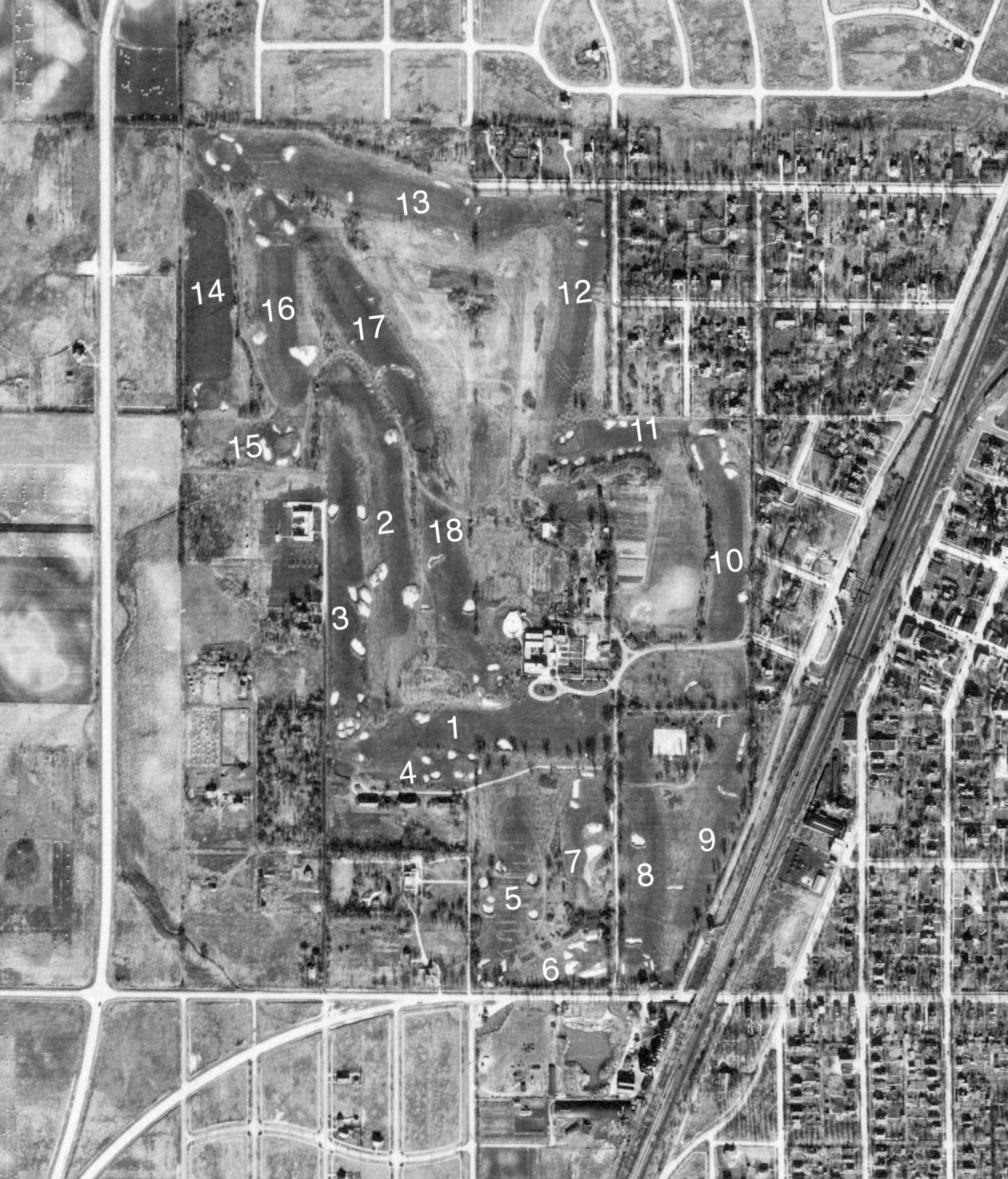
A 1938 aerial of Ravisloe Country Club
Using this aerial, we can see how much the tree plantings have hurt the par-3 6th specifically. In 1938, this was a spectacular hole, and while trees were part of the scenery, they were not on the stage. Recently, a lone maple appeared on the back-left portion of the green pad, a few steps from the putting surface. Within a couple of years, it will cast a shadow over the green and limit the opportunity for the grass to grow. Its roots may even destroy the underlying green mix.
These kinds of plantings now litter the property. Rather than adding trees on the edges of the site, away from the playing corridors, the team at Ravisloe has put them on top of green pads.
-
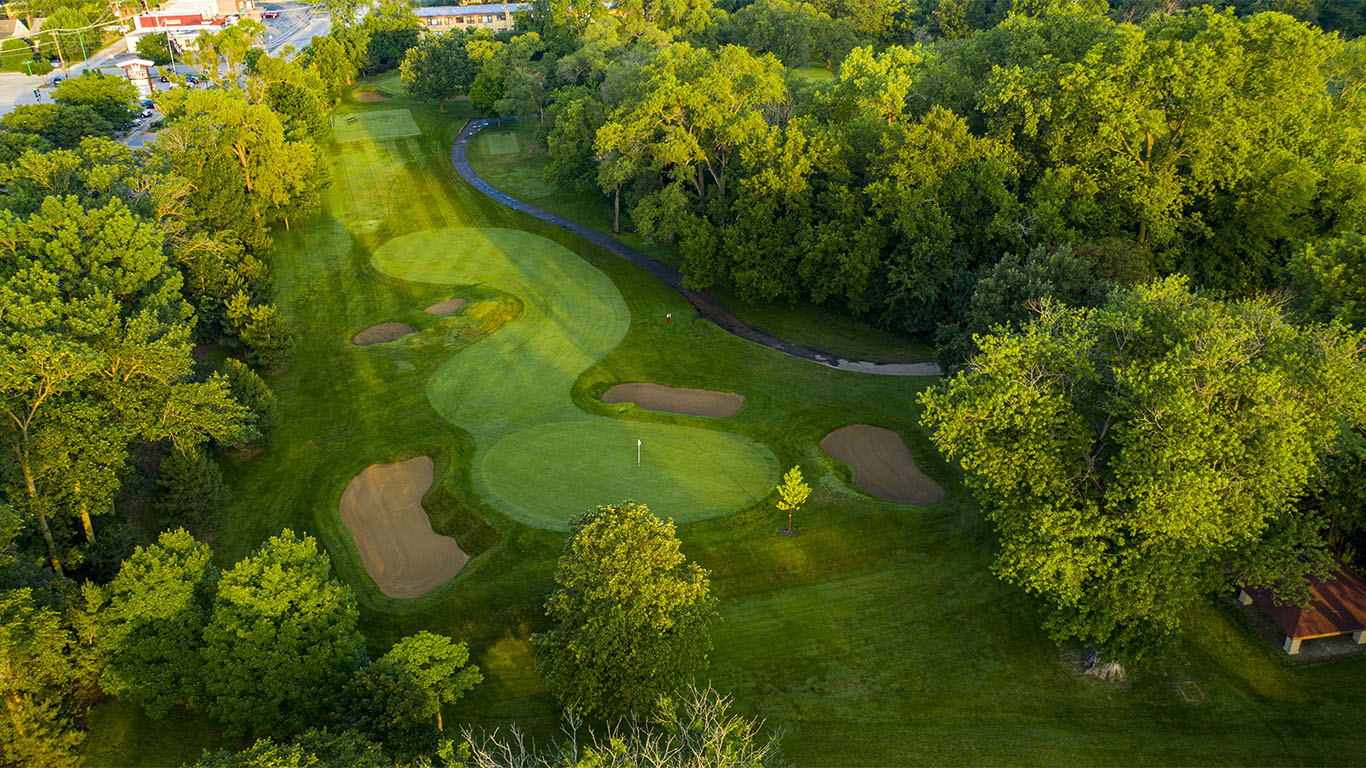
The 6th hole at Ravisloe. Photo credit: Andy Johnson
-
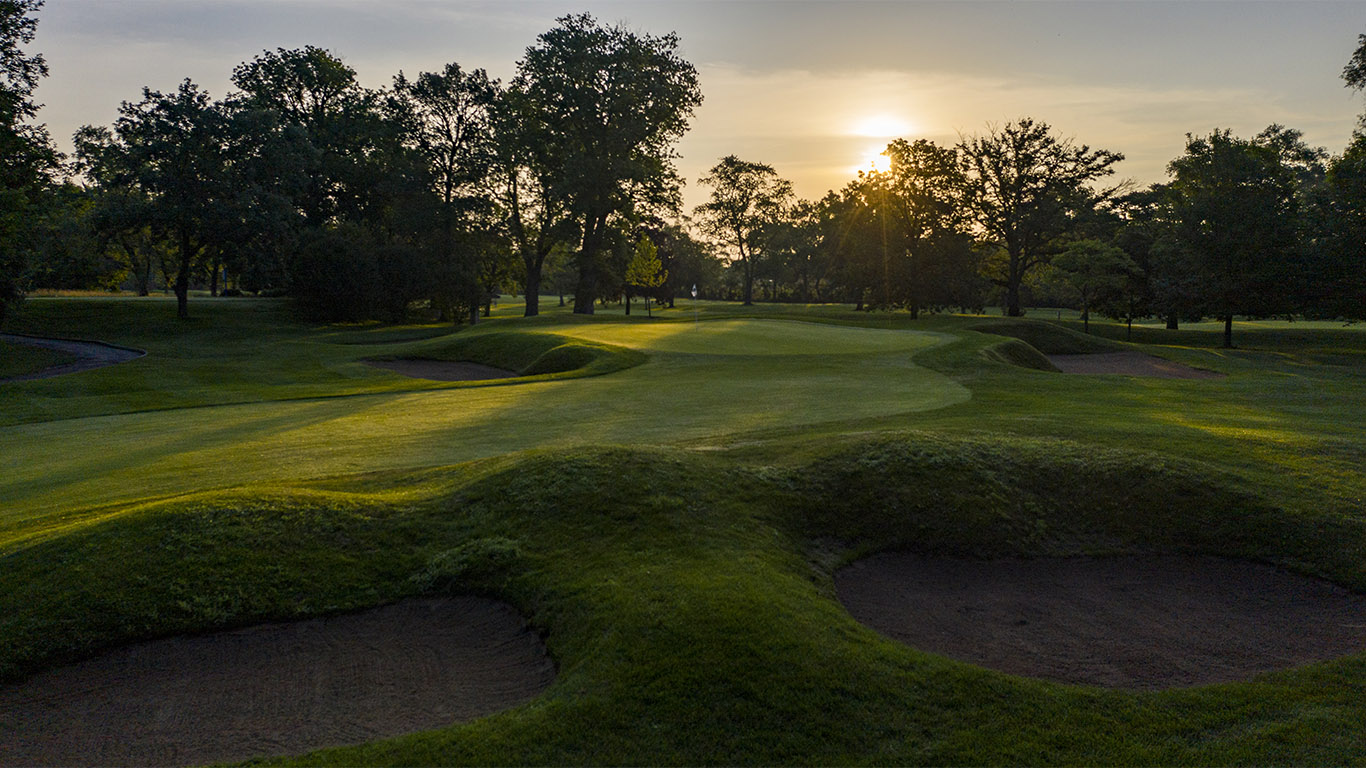
The 6th hole at Ravisloe. Photo credit: Andy Johnson
-
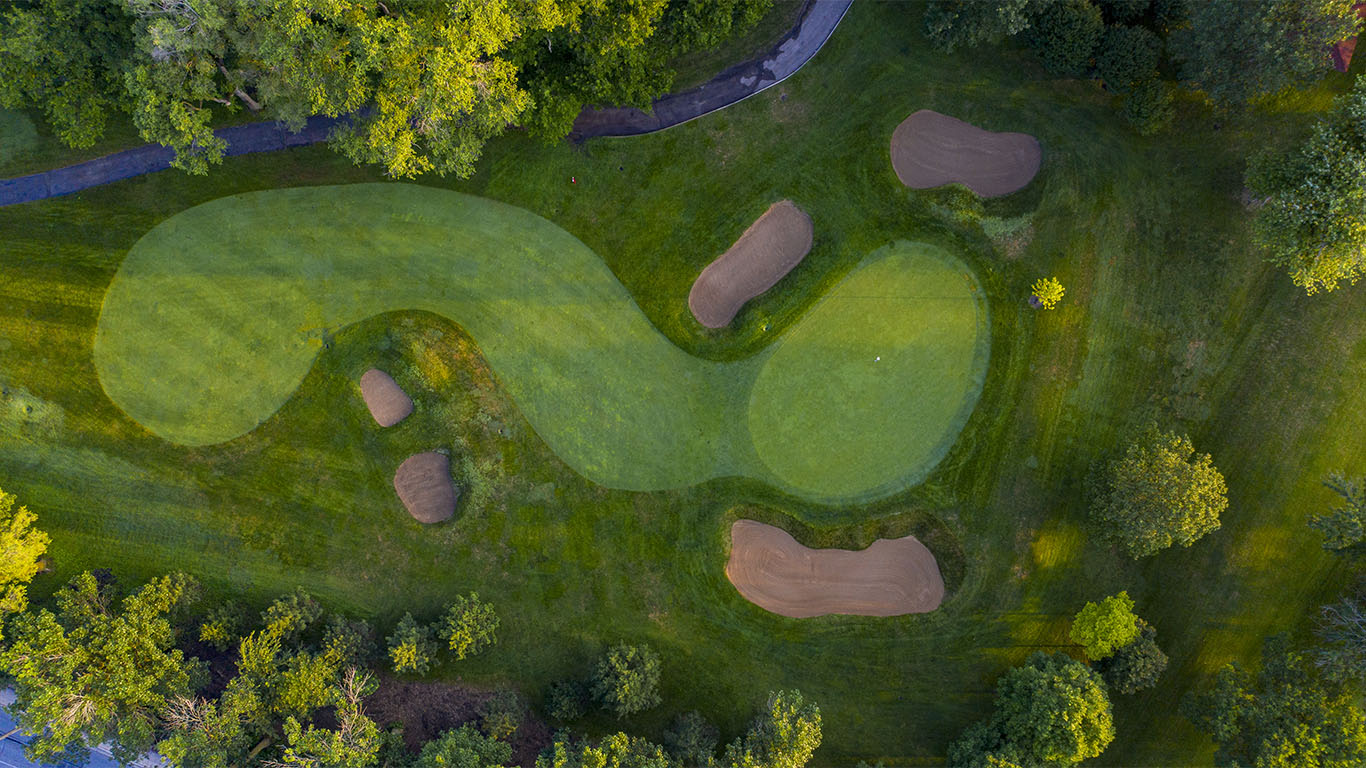
The 6th hole at Ravisloe. Photo credit: Andy Johnson
-
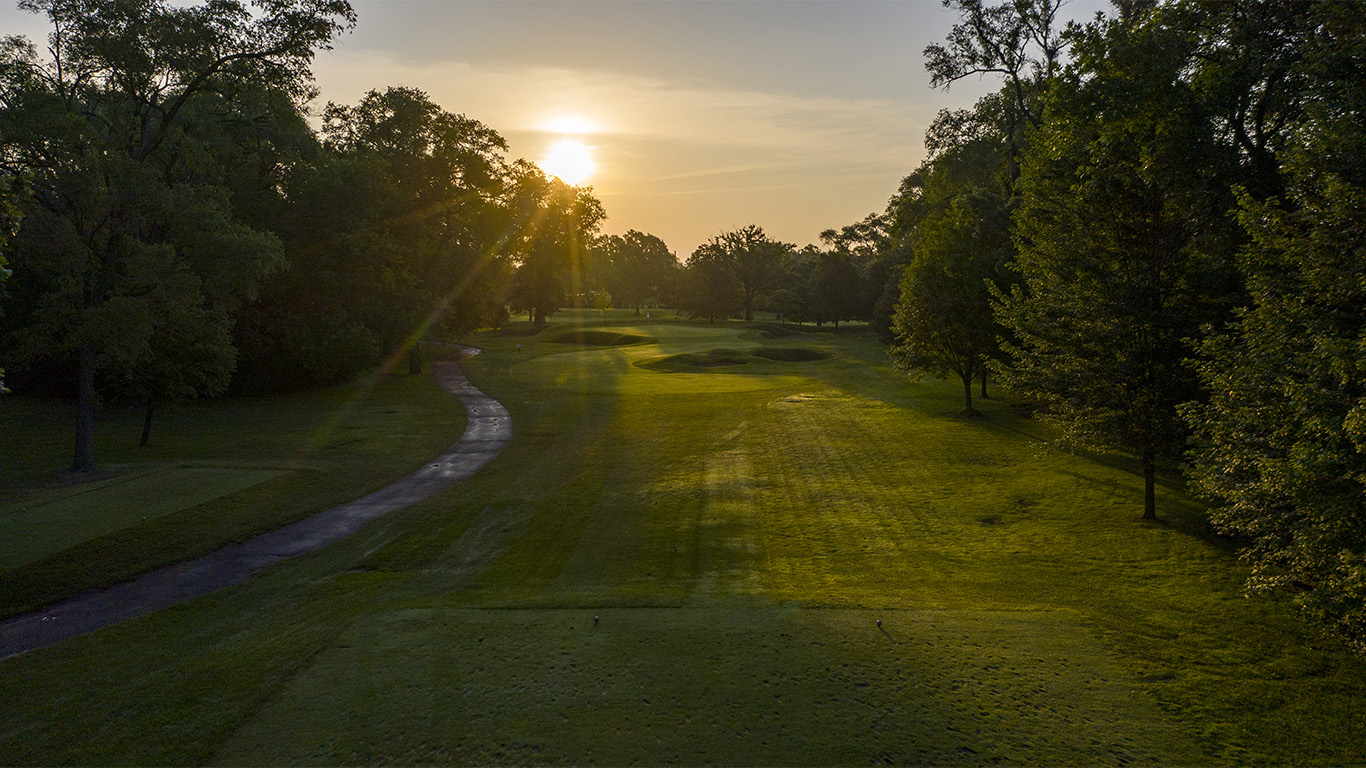
The 6th hole at Ravisloe. Photo credit: Andy Johnson
-
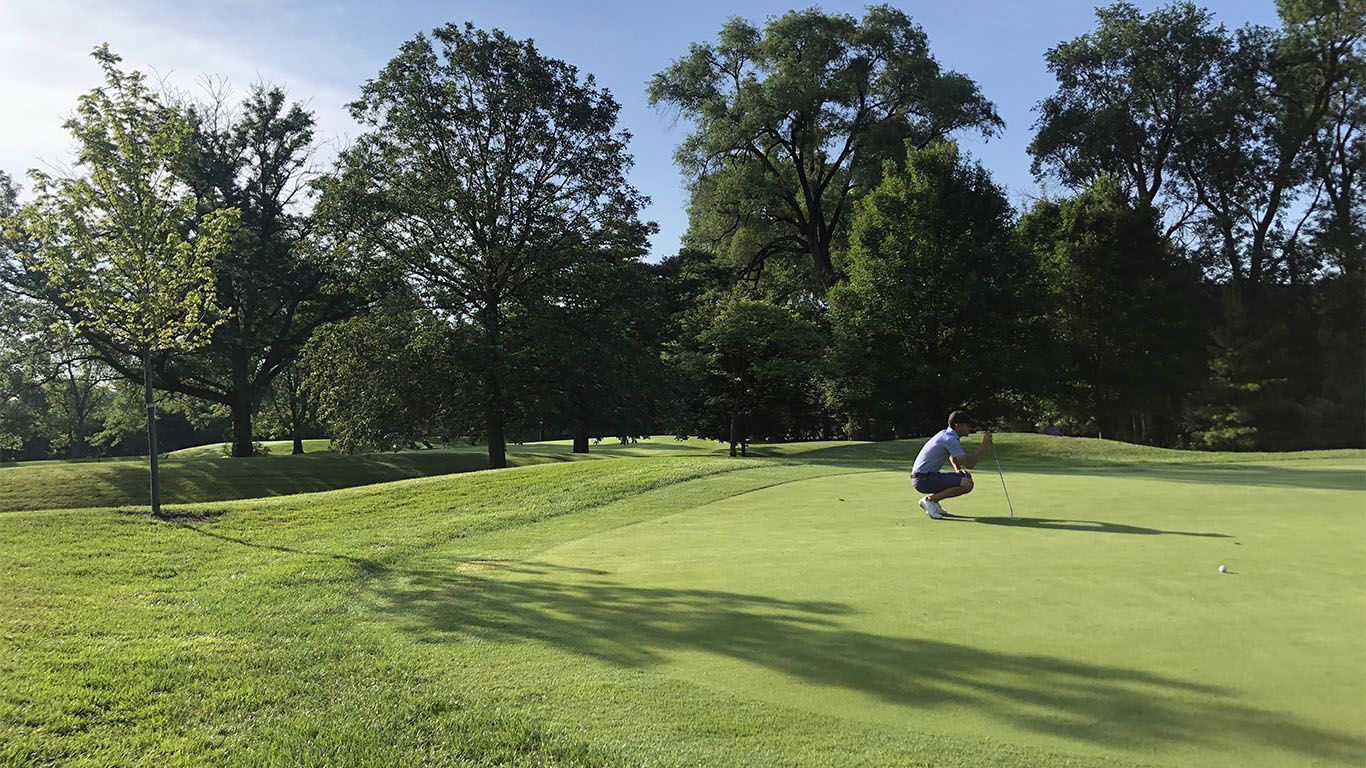
The new tree on the 6th hole at Ravisloe. Photo credit: Andy Johnson
-
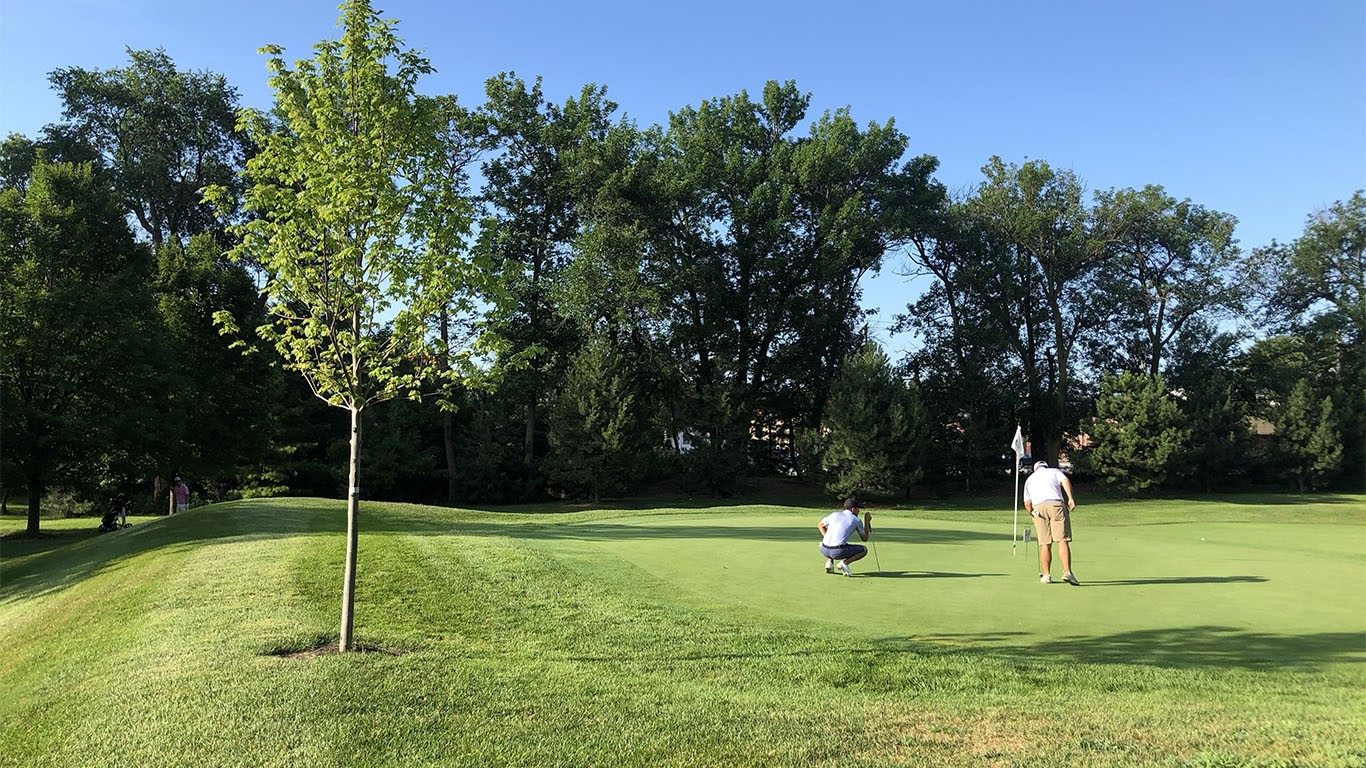
The new tree on the 6th hole at Ravisloe. Photo credit: Andy Johnson
Ten years ago, Ravisloe stood out in the mediocre Chicago-area public golf scene. It was different. But the past five years have been difficult to watch, as Ravisloe has become more and more like your standard forgettable course. Instead of 40 rounds a year, I play one or two there. I used to feel excitement when I got off at the Dixie Highway, but today, I just feel anxiety as I wonder what new alterations I’ll see. I still recommend Ravisloe to those looking for compelling public golf architecture in the Chicago area, but I now include the caveat that they should see the course sooner rather than later.
Dr. Gendreau’s love of nature and record as a conservationist are great qualities for a golf course owner. I just wish he would focus on conserving the Ravisloe property’s most important feature: the golf.


 by
by 
